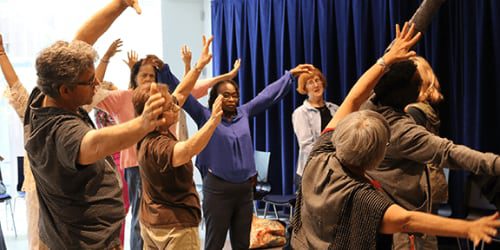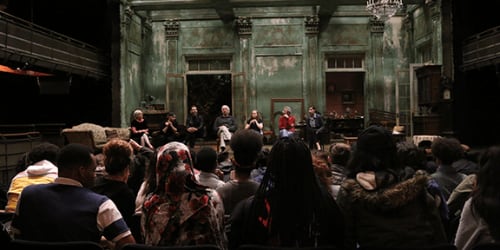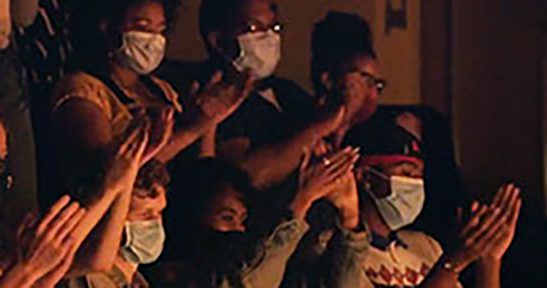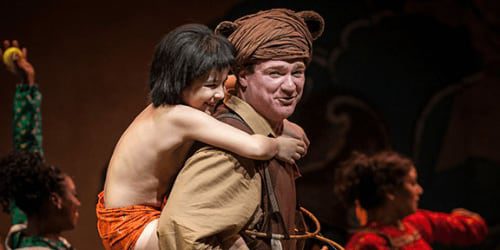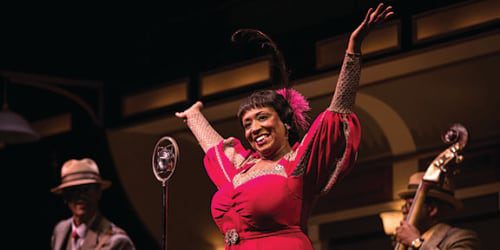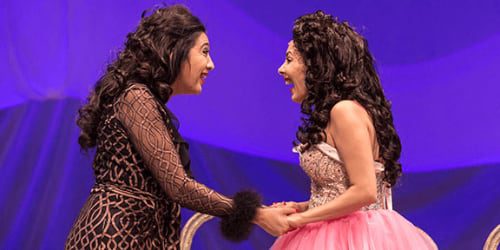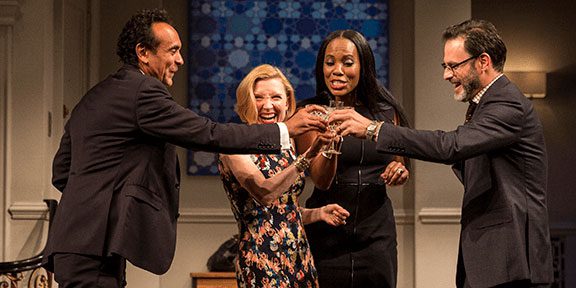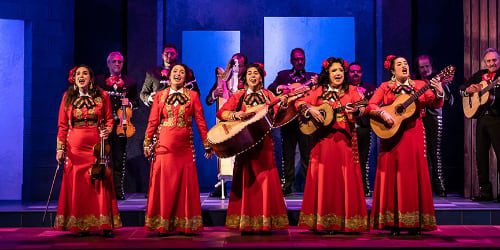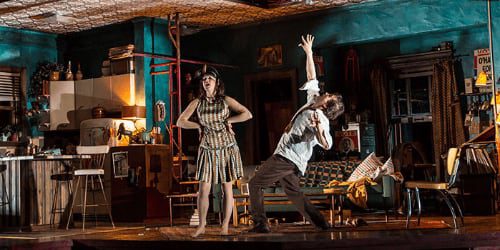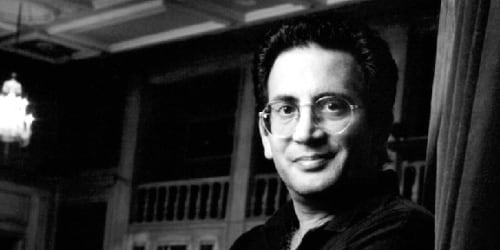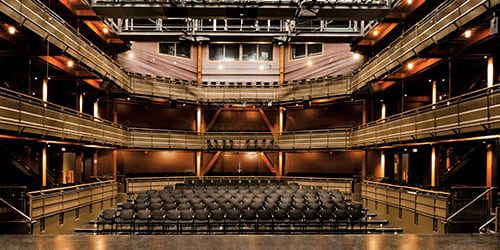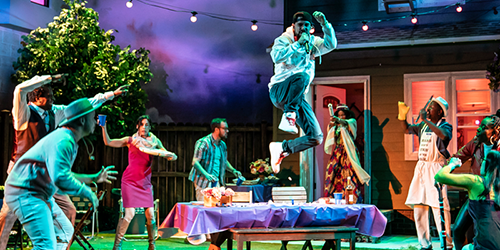A Christmas Carol is on stage now!
GET TICKETS
Charles Dickens began writing A Christmas Carol in October 1843. He finished it by the end of November, and on December 19, it appeared in bookstores. By February 1844, eight theater companies had mounted productions of the ghostly Christmas tale. These rapid page-to-stage transformations were not uncommon in Dickens’ day: indeed, eager adapters often put his serial novels onstage before their final installments were published. But unlike most of the literary work that graced the mid-19th century stage, A Christmas Carol has unflaggingly sustained its popularity to the present day.
In addition to the countless stage adaptations mounted in Dickens’ lifetime, Dickens himself performed his text. Late in his life, he toured Britain and America giving readings of his works, often including A Christmas Carol. By all accounts, Dickens was a master storyteller who put on a lively voice for each character, and often edited or changed the text to appeal to a particular audience. After Dickens’ death, the tradition of reading A Christmas Carol aloud continued: the 20th century saw readings by Lionel Barrymore, Eleanor Roosevelt, and scores of Dickens impersonators. The 20th century also introduced a new medium for Dickens’ classic work. In 1901, the first film version of the story, titled Scrooge; or Marley’s Ghost, debuted in Britain, and the first American film version was made in Chicago in 1908. Dozens of films followed in the ensuing decades, with distinguished actors such as Seymour Hicks, Alistair Sim, and Albert Finney in the central role of Scrooge.
In the second half of the 20th century, less distinguished (but arguably more famous) folks played Scrooge— since the early 1960s, film and TV writers have placed their well-known characters in Dickens’ classic story. Mr. Magoo’s Christmas Carol debuted in 1962 with Magoo himself portraying Scrooge. It was followed by, among others, Mickey’s Christmas Carol in 1983, aptly featuring Scrooge McDuck, and 1992’s The Muppet Christmas Carol, which showcased Michael Caine as Scrooge opposite Kermit the Frog as Bob Cratchit. The gang on Sesame Street joined the trend later, producing a direct-to-video film in 2006 with Oscar the Grouch typecast as the miserly protagonist. Others who have taken a crack at the old Christmas chestnut include Bugs Bunny, the Flintstones, the Jetsons, Brer Rabbit, and more satirically, Blackadder and the anthropomorphic produce of Veggie Tales. Between Thanksgiving and New Year’s, a consumer of media would be hard-pressed to avoid all traces of A Christmas Carol.
Indeed, even during its off-season, A Christmas Carol stays with us. We use the term Scrooge to refer not just to Dickens’ character, but to any penny-pinching curmudgeon. Few literary characters see their names made into words: Scrooge stands in the rarified company of such luminaries as Romeo, Don Juan, and Dr. Jekyll and Mr. Hyde. We have also co-opted Scrooge’s catchphrase Bah humbug!, which now functions as a broad expression of disapproval. And though Tim was tiny, his influence isn’t: countless centers and funds for children with disabilities bear his name.
Despite the ubiquity and accessibility of A Christmas Carol on screen and in print, the heartwarming story spurs us to seek out live performances. A Christmas Carol, which incites us to reexamine our relationships with both friends and strangers, is a story best experienced communally. That explains why, even in this age of YouTube and Netflix, thousands of Americans savor A Christmas Carol at regional theatres across the country. Just as 19th century audiences packed auditoriums for Dickens’ spirited readings, 21st century audiences come together to delight in adaptations. A few things have changed: Goodman Theatre’s production uses modern staging techniques and technology unheard of in Dickens’ day. But much has stayed the same: the story still spurs us to scrutinize ourselves and our community, and it still doses up much-needed holiday cheer. 180 years after its first publication, A Christmas Carol maintains a prominent place on our bookshelves, screens, and stages, and more importantly, in our minds and hearts.
Neena Arndt is the Resident Dramaturg for Goodman Theatre.







